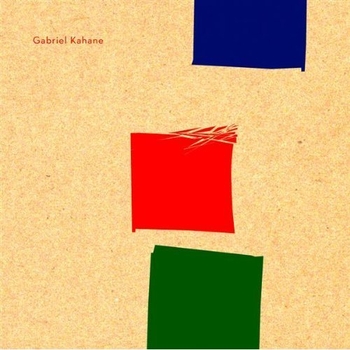
[purchase]
I grew up in a musical household. My oldest brother came to love jazz, and introduced me to the music of Anthony Braxton and Ornette Coleman. The same brother and my parents enjoyed modern classical music, so I heard Alban Berg and the more atonal music of Kurt Weill, as well as Stravinsky. I was also introduced to the music of Phillip Glass, who I have kept bumping into ever since. And my father once took me and my brothers to see Ravi Shankar in concert. I didn’t enjoy all of this music then, and there is much of it that I still don’t, but the exposure definitely had an affect on me. Years later, I sang in an amateur chamber choir with an ambitious conductor. He had us singing modern classical works, and while my co-choristers slaved over the odd harmonies and rhythms, I found that this music seemed fairly natural to me.
I mention all of this by way of warning. The music on Gabriel Kahane’s debut album seems different, but I understand the difference, and I find this to be wonderful music. But, to some listeners, this music may seem strange and off-putting. My advice is to take the time you need to let this album grow on you, and to understand its logic. It may feel like work, but the rewards are great.
To begin with, I don’t think that it is fair to an artist to post an entire album, but having to choose two songs here meant removing them from their context; that matters here more than with most albums I review. Kahane’s album is a song cycle. There are vocal pieces separated by the occasional instrumental interlude. These interludes restate a musical theme we have just heard, or they anticipate a theme we will hear next. And there are musical motifs that appear in a song, only to reappear in a later song in altered form, as a comment on the differing emotional climate.
All of this would suggest that Kahane is familiar with modern classical music, and that is indeed the case. He comes from that world. Kahane is a classical composer, and his father is a concert pianist specializing in modern works. But his singing here is in what I will call, for lack of a better term, a folk-pop style. His voice reminds me somewhat of Bruce Hornsby’s, but with a lighter tone and with occasional falsetto swoops. And the instrumentation suggests that Kahane’s musician friends include not only classical players, but also jazz and even folk musicians. Kahane plays piano, and he is joined by at least twenty other musicians; there are strings, brass and woodwinds here, but also drums, acoustic guitar, mandolin and banjo. Twenty plus musicians would qualify as a chamber orchestra if they were all used at once, but that never happens here. Villanelles uses just acoustic guitar and mandolin. Elsewhere, Kahane uses a light touch, bringing instruments in and out of the mix as needed, and never going for a power sound.
Durrants opens the album, and here is the clearest influence of Phillip Glass. The song begins with a figure played on the piano, and the rhythm seems clear. But soon other instruments begin to enter and exit the mix, and with each change, the rhythm seems to shift. In Glass’s music, these shifts occur gradually, and the music undergoes a gradual metamorphosis. But Durrants has a running time of only 3:39, so these shifts come far more rapidly, and are therefore more unsettling. This perfectly suits a story of a couple who take a trip to try to save a failing relationship.
Lyrically, Durants serves as an overture for the album. From here, we go on to meet couples whose relationships are in various states, but all of whom have a degree of unease. There also individuals who seek refuge or solace. And travel is a theme that keeps coming back. Underberg is a building which is a famous landmark in Brooklyn, and which was scheduled for demolition as this album was being made; Kahane, in the song Underberg, uses this as a metaphor for the state of a relationship. North Adams describes a ride up the Taconic Parkway as a rush to freedom. Slow Down describes a woman who has found escape from city life and is communing with nature; the song has lush imagery and a remarkable meeting of acoustic and orchestral sounds. And The Faithful depicts a woman whose faith in others is tested over time, and endures.
I could excerpt lyrics to illustrate the poetic qualities of the words, but I come up against the question of context again. These songs are best taken as a whole. Suffice it to say, the level of musicality here is no surprise when you know Kahane’s background. But the quality of the poetry is most unexpected. My advice to my readers and listeners is: take a chance on this album and get to know it. It may be unlike anything else in your collection, but you’ll be glad you have it.
Gabriel Kahane: Slow Down
Gabriel Kahane: The Faithful






1 comments:
This is wonderful music, Darius. Your early references to Berg and atonal Weil, not to mention the jazz, set me up for something less-than-accessible. But this is just richly textured and inventive tonal melody. I'm buying the album on the strength of these two cuts. Thanks for the find.
Post a Comment